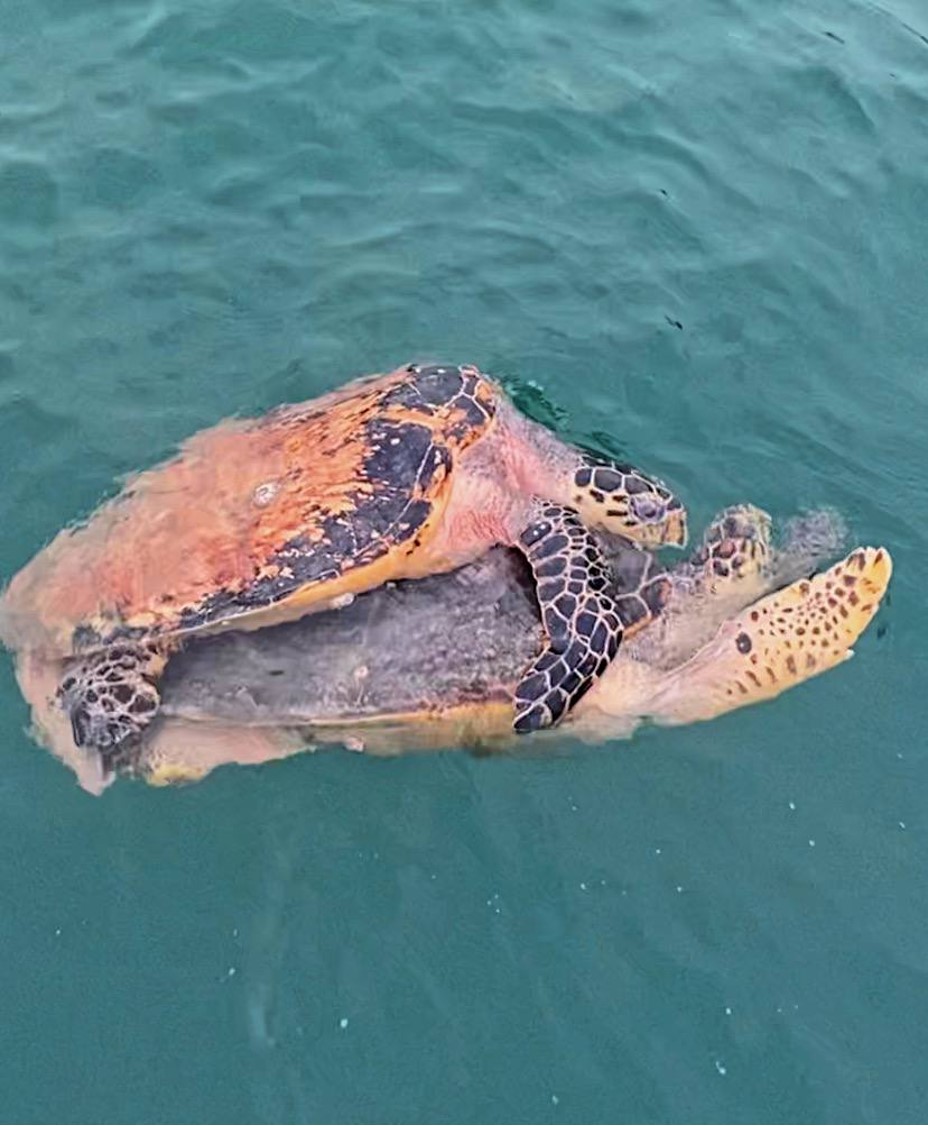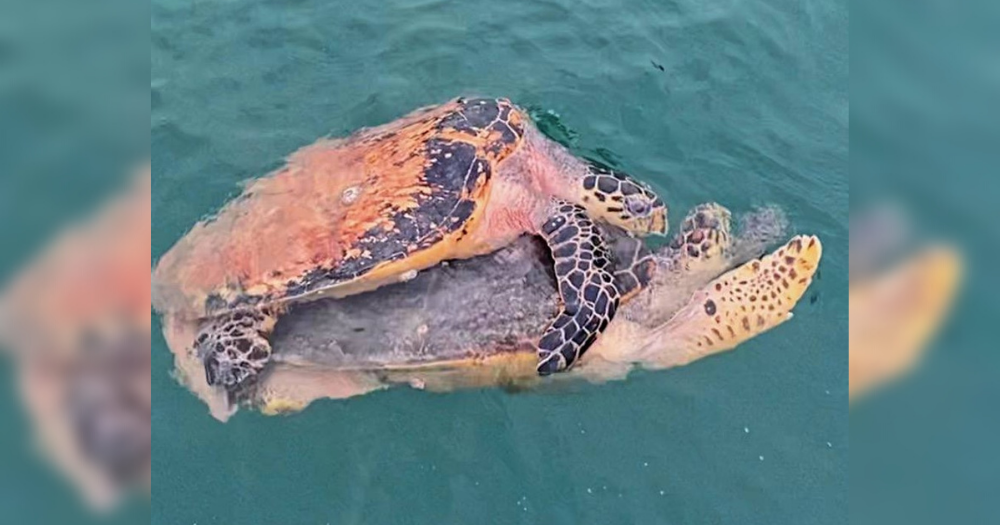There's plenty of wildlife on land in Singapore, but its waters are equally rich in biodiversity too.
One indicator that marine biodiversity is thriving here was a recent and unprecedented sighting of two hawksbill turtles mating in the sea.
Getting it on
The sighting was shared on Facebook by marine biologist Zeehan Jaffar, and recorded by the Lee Kong Chian Natural History Museum (LKCNHM).
According to LKCNHM, this is the first record of hawksbill turtles copulating at sea in Singapore.
The two lovebirds were spotted near Sisters' Island Marine Park at around 6:45pm on May 26.
LKCNHM's record states that "atypical splashing" near the water's surface drew the attention of researchers, who were stationed on a nearby boat.
The researchers then noticed that the turtles were in a copulatory position, with the male turtle atop the female, grasping onto her with the claws on his front limbs.
During the entire process, it was observed that the male would bite onto the neck of the female.
Here's the first ever photographic evidence of this species mating in Singapore waters.
 Photo by Joseph S K Cham via LKCNHM
Photo by Joseph S K Cham via LKCNHM
Researchers observed the turtles' sexy times for around one minute.
When their boat drew closer though, the female turtle was startled, and dived underwater with the male turtle still latched on top.
Hawksbill turtles nest regularly here
Although the sight of the critically endangered hawksbill turtles mating here is a novel one, the species has been regularly seen on Singapore shores.
Female hawksbill turtles have been visiting our sandy beaches to nest and lay their eggs. These individuals often return to the same nesting site every few years.
Each time, female hawksbill turtles can lay up to 200 eggs.
Recently in June, over 100 hawksbill turtle hatchlings were spotted by several anglers at East Coast Park, who then informed the National Parks Board.
Together, the group collected the hatchlings spread out across the grass field and safely released them into the water.
However, the survival rate of a hatchling is extremely low, as only one in a thousand hatchlings make it to adulthood.
Even as adults, the turtles face threats such as natural predation, poaching and marine pollution like abandoned fishing nets and plastic waste.
What do you do when you see a nesting turtle?
Here are some things to take note of if you ever encounter a nesting turtle, according to NParks:
- Call NParks at 1800-4717300.
- Keep your distance from the turtle and the eggs. Touching the turtle may scare or provoke it. Handling the eggs may damage them, or introduce bacteria into the nest.
- Talk softly and stay out of sight. Do not shine lights at the turtle or use flash photography. Light and noise may scare the turtle, and cause it to leave without laying any eggs.
- Keep clear of tracks left by the turtle. Researchers use the tracks to identify the species of the turtle and to locate the nest.
You can also contribute to LKCNHM's efforts to document turtle sightings in Singapore. If you happen to spot a turtle, you can fill in the survey form here.
Related stories
Top photo by Joseph S K Cham via LKCNHM
If you like what you read, follow us on Facebook, Instagram, Twitter and Telegram to get the latest updates.

